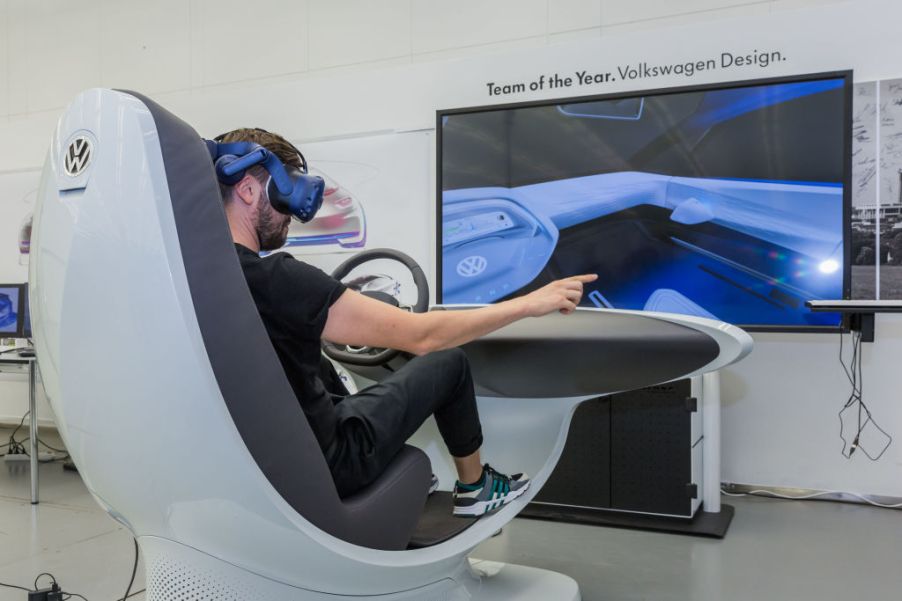
4 Ways Automakers Use Virtual Reality to Design and Sell Cars
Virtual reality (VR) isn’t just for video games anymore, and it hasn’t been for quite some time. VR applications are on the rise in countless industries, and the auto industry is no exception. From design and assembly to the showroom and open road, virtual reality is improving the business of making and selling cars in four big ways:
1. Reducing design time
VR programs speed up and improve auto design. That’s because virtual reality lets manufacturers test the features and engineering tolerances of cars in a simulated environment, explains the American Society of Mechanical Engineers. Automakers can evaluate new models earlier in the design process, thus cutting back the time and cost of bringing a new car to market.
Ford, for example, is reducing its design time using a VR tool called Gravity Sketch, according to MotorTrend. With this program, Ford engineers can skip traditional flat preliminary sketches and jump straight into designing cars in three dimensions. It’s easier to spot design flaws in three dimensions, and it’s cheaper to make changes to a virtual model than a more expensive physical prototype.
2. Modeling safety

Testing a car’s safety features is expensive as it requires repeatedly crashing — often totaling — fully assembled cars to pinpoint the dangers drivers and passengers may face. Virtual crash-testing is unlikely to replace physical crash tests any time soon, Automotive World says, but it can be a valuable addition.
Simulated crashes let engineers spot safety issues relatively early on, which means they need fewer real-world crash tests to catch the remaining problems. General Motors, for example, used to crash literally hundreds of cars to test a single new model. Now, because GM can fix more issues sooner, they only need to crash a fraction of those vehicles.
3. Try before you buy

Car buyers can also benefit from the growth of automotive VR apps. Most people want to directly experience and evaluate new cars and possible customizations, explains AR Post. Yet, it’s impossible to make every possible vehicle configuration available on most showroom floors.
Audi was among the first automakers to invest in virtual reality. Today hundreds of their dealerships have VR stations where clients can check out vehicle options in three dimensions, down to the finest details. It’s not hard to imagine a day when car buyers won’t even have to leave home to buy a new car. With VR, “try before you buy” takes on a whole new meaning.
4. Off-site training
Car manufacturing isn’t a game, but game-like virtual training apps can teach auto workers the basics before they begin working on-site. Mistakes made during a virtual simulation don’t cause any injuries, and they don’t damage expensive equipment either. By the time a worker enters the production plant, prior VR training can increase their on-the-job safety.
Last year, for example, Volkswagen teamed up with the software company Innoactive to develop VR training for 10,000 employees working in Volkswagen automaking facilities around the world, Mashable reports. Volkswagen workers now have a way to become familiar with factory layouts and processes before they even step foot in a facility.


